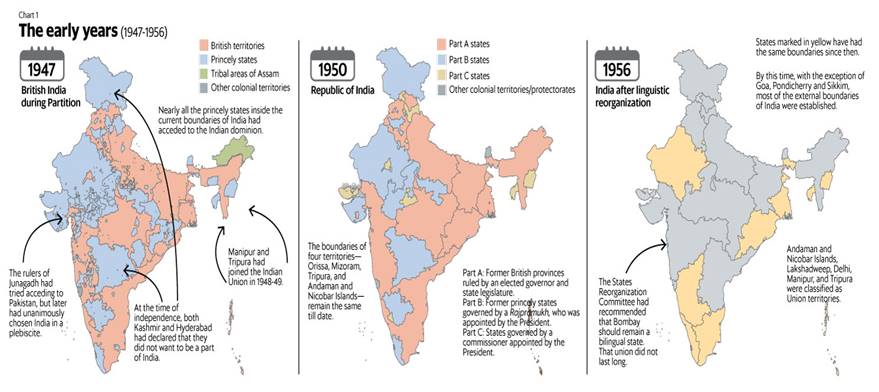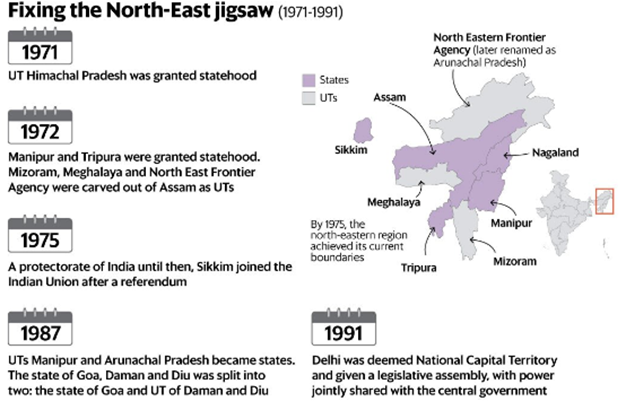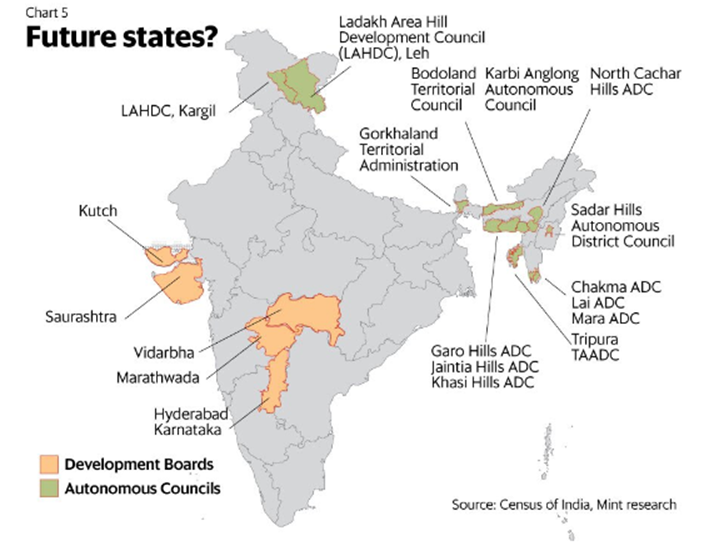



PMAY funds may be used for flood rehabilitation
The State government is likely to use funds from the Pradhan Mantri Awas Yojna (PMAY) to construct over one lakh homes destroyed in the floods.

- To provide pucca house to all who are houseless and living in dilapidated houses in rural areas by 2022.
- It aims for the Goal – Housing for the all.
- Cost is shared between Central and State government.
- Beneficiary is entitled for 90 days of unskilled labor under MGNREGA.
- Funds are electronically transferred to beneficiary account.
- Identification and prioritization of beneficiary are done using Socio- Economic Caste Census ensuring total transparency and accountability.
- Gram Sabha is key organ in determining the final list of beneficiary .
Focus of Swachh Bharat Abhiyan’s ODF+ phase on basic solid, liquid waste management in rural India.
Swachh Bharat Abhiyan has started to look beyond toilets and is aiming for ODF + ( Open Defecation Free plus). It will be included in Swachh Survekshan 2019.
- Elimination of the open defecation.
- Behaviour change to ensure utility of constructed toliets.
- Solid Waste Management divided into biodegradable waste and plastic waste.
- Liquid waste management divided into Kitchen Water and Faecal waste.
- Ban on Plastic.
- Collection and sorting of the waste at the block level.
- Recycling and Reusing the waste to bring profitability.
- Not to create land-fills across villages of India.
- Citizen feedback will fetch 35% marks.
- Observations of the Third Party surveyors, Ipsos about plastic littering and water logging fetch another 30% marks.
- Measurement of service level progress of the final activities of Swachh Bharat Abhiyan fetch remaining 35%.
- Completely digitized and paperless survey.
Survey ensures continuity and sustainability in the ODF achievement.
Reference: https://www.thehindu.com/news/national/swachh-survekshan-looks-beyond-toilets/article29095052.ece
The Finance Ministry has initiated a comprehensive consultative process with public sector banks (PSBs) to find out the reasons for the sharp rise in bad loans in the previous five years, apart from outlining national priorities with which these banks have to align themselves.
- Reason for the rise in NPA in last 5 years.
- How many of there were stressed assets.
- Why they were not recognized earlier?
- Reasons behind the decline in credit flow, especially to manufacturing sector?
- Total no of credit application received to acceptance ratio of them?
- Alignment of banking with National priorities.
- Stimulating Ideas
- Inculcating a sense of involvement among the bankers.
- $5 trillion economy.
- Increasing digital payments.
- Corporate governance.
- Credit to MSME and Farm sector.
- Doubling Farm Income
- Jal Shakti
- Housing for all.
- Educational loans.
- Ease of living
- Corporate Social Responsibility.
- Growth of exports increased by 2.25% to $26.33 billion in July.
- Slipping of Imports by 10.43% to $39.76 billion.
- Chemicals, Irons and Pharmaceuticals sector recorded positive growth.
- Shipments of gems & jewellery ,engineering goods and petroleum products recorded negative growth.
- Oil as well non oil imports declined.
- Separately, Wholesale Price Inflation (WPI) eased to 1.08%. It means manufacturers are loosing to raise their prices as economic slowdown deepens.
- Manufacturing inflation contributes to 64% in WPI inflation.
- Possible Reasons may be the decline of the Vehicles sale which contributes 60% in manufacturing.
- A trade deficit occurs when a country’s imports exceeds its exports.
- The balance of trade of a nation is a part of the Current Account.
- The current account also comprises of other transactions like the income from the NIIP or the Net International Investment Position and international aid.
US President Donald Trump on Wednesday took aim at India and China, saying the two were no longer “developing nations".
- They are taking advantage of the tag given by World Trade Organisation (WTO).
- According to him, India and China has grown.This is the first time he has named India and China together in the WTO context.
- Claim entitlement to longer time frame for the imposition of safeguards and transition periods.
- Softer tariff cuts.
- Procedural advantages in WTO disputes.
- Ability to avail certain export subsidies.
US and China are already indulged in a brutal trade war which is causing the slowdown of economy. With Respect to India, USA has imposed tariffs on Steel products from India and ended preferential access for Indian products.
India imposed retaliatory tariff on 28 products exported from the USA in June.
- WTO doesn’t define “developed” and “developing” countries.
- Members themselves announce whether they are “developed” or “developing” countries.
- Other members can challenge the decision of a member to make use of provisions available to developing countries.
- The WTO recognizes a country as least-developed countries (LDCs) if they have been designated as one by the United Nations.
Reference: https://www.livemint.com/news/india/donald-trump-s-trade-tirade-targets-india-1565804764366.html
India’s internal boundaries have changed over past seven decades—the biggest reorganization being in 1956, followed by nine changes in state borders.
- Subsuming of GOA in 1961.
- Subsuming of Pondicherry in 1962.
- Subsuming of Sikkim in 1975.
While most regions in British India achieved independence on 15 August 1947, there were several regions that joined the Indian Union later.
States, such as Kashmir, Hyderabad, Junagadh, Manipur and Tripura, became part of the Union in the period between 1947 and 1949, not always without controversy.
India had formally transitioned to a republic of states from a dominion on 26th January,1950. This union of states had three classifications based on whether they were former provinces (part A), princely states (part B), and territories that were going to be directly ruled by the Union government (part C), the precursor to UTs.

- Creation of an Andhra state in 1953 for Telugu-speaking regions of Madras state.
- State Reorganization Commission organized the country into 14 states and 6 Union Territories(UT) mainly along the linguistics lines.
- It recommended against split of Bombay and Punjab along linguistic lines.
- Later, Bombay state was split in two new states: Gujarat and Maharastra in 1960.
- Punjabi Suba Movement led to creation of Punjabi domination, Punjab and Hindi dominated Haryana in 1966.
- Manipur and Tripura were granted statehood and the state of Meghalaya and Union territory Mizoram were carved out of Assam in 1972. It was mainly done to douse the fire of militancy and violence.

- Manipur and Arunachal Pradesh were granted statehood in 1987 (they were UTs earlier).
- Goa, Daman and Diu were split into the state of Goa and the UT of Daman and Diu in 1987.
- Uttaranchal, Jharkhand and Chhattisgarh carved out of Uttar Pradesh, Bihar, and Madhya Pradesh, respectively in 2000. They were created to address long pending regional demands and inequalities in development.
- Telangana was formed in 2014.
- Carving out of Jammu & Kashmir as UT with legislature and Ladakh as centrally administrated UT from J & K state took place in 2019. It is the first time, a state is being split into two UT.
- Several regions across India aspire for full statehood, although the intensity of demand varies across regions, and over time.
- The development boards (established under Section 371 to promote equitable development) in states such as Maharashtra, Gujarat and Karnataka, and territorial councils in the northeast could be the potential contenders for statehood in the future.

Reference: https://www.livemint.com/news/india/how-india-s-map-has-evolved-since-1947-1565803882094.html

© 2025 iasgyan. All right reserved